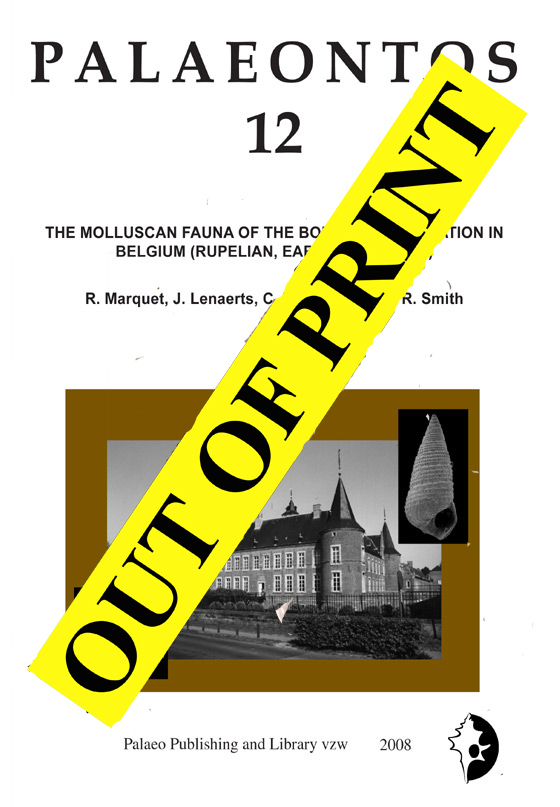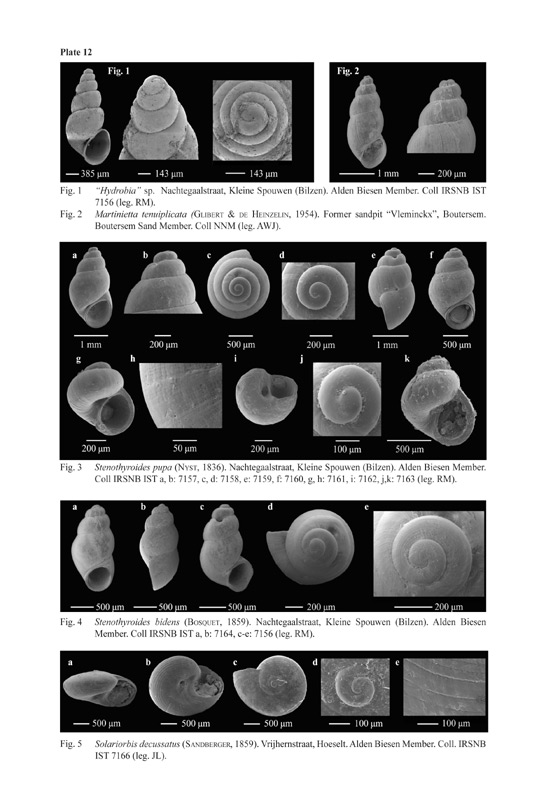
|

|
PALAEONTOS 12Price: non-members: 40 euros, members: 35 euros Marquet R., Lenaerts J., Karnekamp C. & Smith R., 2008, The molluscan fauna of the Borgloon Formation in Belgium (Early Rupelian, Oligocene). ISSN: 1377-4654(100 textpages, 14 textfigures, 5 tables, 22 plates)Summary: The molluscan fauna of the Borgloon Formation (Early Rupelian, Early Oligocene) from Belgium (provinces of Limburg and Vlaams Brabant) is described and its systematiscs and nomenclature are revised. This fauna consists of 90 taxa (the presence of two species is doubtful), viz. 1 Amphineuran, 25 Bivalves and 64 Gastropods. 32 taxa have not been mentioned before from the Borgloon Formation; of these, 14 had already been described from other Formations, 6 are new, 12 are too incompletely preserved or lack well described comparative material (this last category contains mainly terrestrial species) to assess their taxonomy. The faunal composition of the different Members of the Formation is compared. The fauna of the Henis Clay shows the lowest diversity, the one of the Alden Biesen Member the highest. All faunae are of brackish water origin. The Alden Biesen Member furthermore contains a number of terrestrial as well as marine species, which notably enrich the species number, the sands of the Boutersem Member have less mixture of terrestrial and marine material; the Vertebrates and Chara Marls of this Member have mainly a freshwater fauna, with rarer brackish and marine elements. Different freshwater species occur in the Boutersem and Alden Biesen Members, which shows a different apport of material, supposed to be of inhabitants of streaming water in the Alden Biesen Member and of rather stagnant water in the Boutersem Member. Species occurring in the Borgloon Formation have been found all around Europe, but the largest number of species is in common with the Oligocene from the Paris and Mainz basins. Only a very limited number of the taxa occurring in the Borgloon Formation is in common with the older Grimmertingen Member and few evolutionary lines continue during the later parts oft he Middle Oligocene. |
|
ORDER INFORMATION:please contact us at: palaeontos@gmail.com |
|